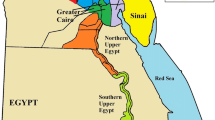Summary
We have attempted quantitatively through a series of assortative mating models to gain insight into the interaction between the usually antagonistic tendencies of artificial and natural selection pressures. We summarize some of the robust conclusions. In cases where natural selection is expressed only through the phenotype and acts in the opposite direction to the culling incline, then fixation of the dominant or recessive type can be achieved and which occurs depends critically on the initial composition of the population and the magnitude of the degree of culling compared to the selection coefficients.
With traits determined at two loci in the case that the double heterozygote is the desired kind, the effect of selfing can only be overcome by very strong artificial selection pressures (high culling order). The degree of culling to achieve its objective can be relaxed with weakening of linkage. The relevant comparison is r 2 + (1 − r)2 < (1 − c)indicating the precise extent of culling needed, to prevent fixation. The relationships are more complex when natural selection forces are also involved (see Model IV).
Similar content being viewed by others
References
Haldane, J. B. S.: Some simple systems of artificial selection. J. Genet. 56, 345–350 (1961).
Karlin, S.: Equilibrium behavior of population genetic models with non-random mating. J. Appl. Prob. 5, 231–313 (1968).
Karlin, S., Feldman, M. W.: Linkage and selection: Two-locus symmetric viability model. Theor. Pop. Biol. 1, 39–71 (1970).
Karlin, S., Carmelli, D.: Some population genetic models combining artificial and natural selection pressures I. One locus theory. Theor. Pop. Biol. 7, 94–122 (1975).
Karlin, S., Carmelli, D.: Some population genetic models combining artificial and natural selection pressures II. Two locus theory. Theor. Pop. Biol. 7, 123–148 (1975).
Pollack, E.: Some consequences of selection by culling when there is superiority of heterozygotes. Genetics 53, 977–988 (1966).
Author information
Authors and Affiliations
Additional information
Supported in part by NIH Grant USPHS 10452-09.
Rights and permissions
About this article
Cite this article
Carmelli, D. Some population genetic models combining artificial and natural selection pressures in the presence of assortative mating. J. Math. Biology 4, 49–67 (1977). https://doi.org/10.1007/BF00276352
Received:
Revised:
Issue Date:
DOI: https://doi.org/10.1007/BF00276352




